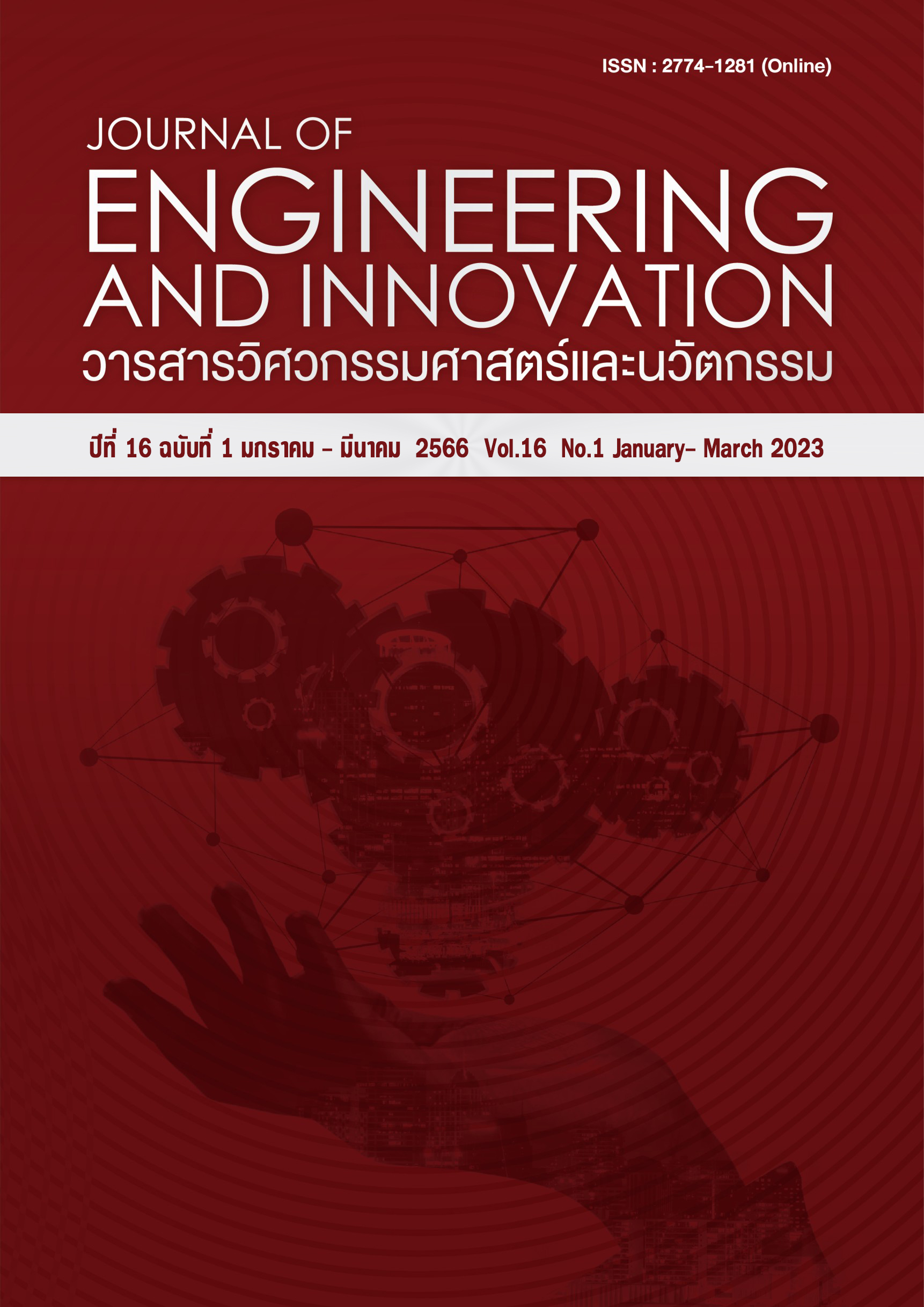Perception of Passengers on COVID-19 Countermeasures: Case study of Blue and Purple Lines
Main Article Content
Abstract
This paper presents an analysis of perception of passengers on COVID-19 countermeasures taking the Blue and Purple Line as case a study. The samples were passengers of the MRT Blue Line and MRT Purple Line traveling during the COVID-19 pandemic. The exploratory factor analysis (EFA) and second order confirmatory factor analysis (CFA) indicates that passengers’ perception consists of five factors: Awareness (highest factor loading of 0.84), Confidence, Health, App, and Distancing (with factor loadings of 0.81, 0.81, 0.69 and 0.40 respectively). It was found that although passengers felt uncomfortable with respect to the social distancing measures such as alternate seat blocking and reduced capacity, they were aware of the consequence of the measures, so they felt confident to travel safely. It was also found that passengers are highly aware of measures related to public health such as temperature screening, strict enforcement of mask wearing and hand sanitization. The findings are applicable to operation of other public transport modes such as bus as well as post-covid operation.
Article Details
References
World Health Organization (WHO). Novel Corona- virus (2019-nCoV) Situation Report-1 January 21, 2020.
World Health Organization Thailand (WHO). Coro-navirus disease 2019 (COVID-19) Situation Report-April 3, 2020.
การรถไฟฟ้าขนส่งมวลชนแห่งประเทศไทย. รายงานประจำปี 2563 Connected เชื่อมต่อเส้นทางสรรค์สร้างความสุข. 2563
กรมการขนส่งทางราง. มาตรการพึงปฏิบัติการจัดการระบบขนส่งทางรางภายใต้ประกาศสถานการณ์ฉุกเฉินในทุกเขตท้องที่ทั่วราชอาณาจักรเพื่อควบคุมการแพร่ระบาดของเชื้อไวรัสโคโรนา 2019 (COVID-19). 2563
“กรมการขนส่งทางรางสั่งเน้นมาตรการเว้นระยะห่างทางสังคม”. ข่าวไทยพีบีเอส (7 พฤษภาคม 2563). แหล่งที่มา: https://news.thaipbs.or.th /content /292172 ค้นหาเมื่อ 9 กันยายน 2564.
วิโรจน์ รุโจปการ. การประยุกต์การวิเคราะห์ปัจจัยเพื่อการวางแผนการขนส่ง: ภาควิชาวิศวกรรมโยธา คณะวิศวกรรมศาสตร์ มหาวิทยาลัยเกษตรศาสตร์. 2559
วิโรจน์ รุโจปการ. การวิเคราะห์เส้นทาง: ภาควิชาวิศวกรรมโยธา คณะวิศวกรรมศาสตร์ มหาวิทยาลัยเกษตรศาสตร์. 2558
กริช แรงสูงเนิน. การวิเคราะห์ปัจจัยด้วย SPSS และAMOS. กรุงเทพฯ: บริษัท วี.พริ้นท์ (1991) จำกัด; 2554
Hair JF, Black WC, Babin BJ, Anderson RE. Mul- tivariate Data Analysis (8th Edition). Pearson Education, Inc.: Annabel Ainscow; 2019.
Kline RB. Principles and Practice of Structural Equation Modeling (4th Edition). New York, NY, USA: Guilford Press; 2016.
Marsh HW, Hocevar D. Application of confirmatory factor analysis to the study of self-concept: First-and higher order factor models and their invariance across groups. Psychological bulletin. 1985;97(3):562.
Dong H, Ma S, Jia N, Tian J. Understanding public transport satisfaction in post COVID-19 pandemic. Transport Policy. 2021;101:81-8.
Song K-H, Choi S. A Study on the behavioral change of passengers on sustainable air transport after COVID-19. Sustainability. 2020;12(21):9207.
Zhang N, Jia W, Wang P, Dung C-H, Zhao P, Leung K, et al. Changes in local travel behaviour before and during the COVID-19 pandemic in Hong Kong. Cities. 2021;112:103139.
International Union of Railways. Management of Covid-19: Potential measures to restore confidence in rail travel following the Covid-19 pandemic, Paris, 2020
Luo JM, Lam CF. Travel anxiety, risk attitude and travel intentions towards “travel bubble” destinations in Hong Kong: Effect of the fear of COVID-19. International journal of environmental research and public health. 2020;17(21):7859.
Franzen A, Wöhner F. Coronavirus risk perception and compliance with social distancing measures in a sample of young adults: Evidence from Switzerland. PloS one. 2021;16(2):e0247447.
Tan L, Ma C. Choice behavior of commuters' rail transit mode during the COVID-19 pandemic based on logistic model. Journal of Traffic and Transportation Engineering (English Edition). 2021;8(2):186-95.
Vagias WM. Likert-type scale response anchors. clemson international institute for tourism. & Research Development, Department of Parks, Recreation and Tourism Management, Clemson University. 2006:4-5.
ละเอียด ศิลาน้อย และ กันฑิมาลย์ จินดาประเสริฐ. การใช้มาตรประมาณค่าในการศึกษาวิจัยทางสังคมศาสตร์ มนุษยศาสตร์ การโรงแรม และการท่องเที่ยว. วารสารบริหารศาสตร์ มหาวิทยาลัยอุบลราชธานี. 2562;8(15):112-26
วัฒนา สุนทรธัย. เหตุผลที่อยู่เบื้องหลังการพัฒนาเกณฑ์การตัดสินใจชนิด 5 ระดับ. วารสารนักบริหาร (Executive Journal). 2551;28(3):97-101.
“Top 10 popular smartphone apps to track Covid-19”. Geospatial World Advancing Knowledge For Sustainability (18 April 2020). แหล่งที่มา: https:// www.geospatialworld.net/blogs/popular-apps-covid-19/ ค้นหาเมื่อ 16 ตุลาคม 2564.
“Contact tracing apps: A new world for data privacy”. NORTON ROSE FULBRIGHT (February 2021. แหล่งที่มา: https://www.nortonrosefulbright.com/en-th/Knowledge/publications/d7a9a296/contact-tracing-apps-a-new-world-for-data-privacy ค้นหาเมื่อ 16 ตุลาคม 2564.

